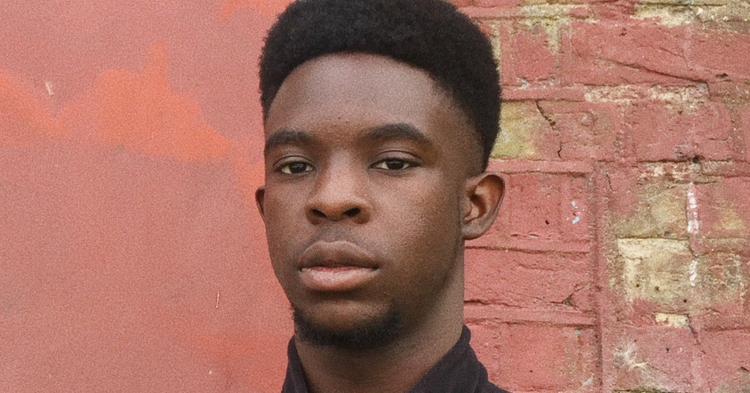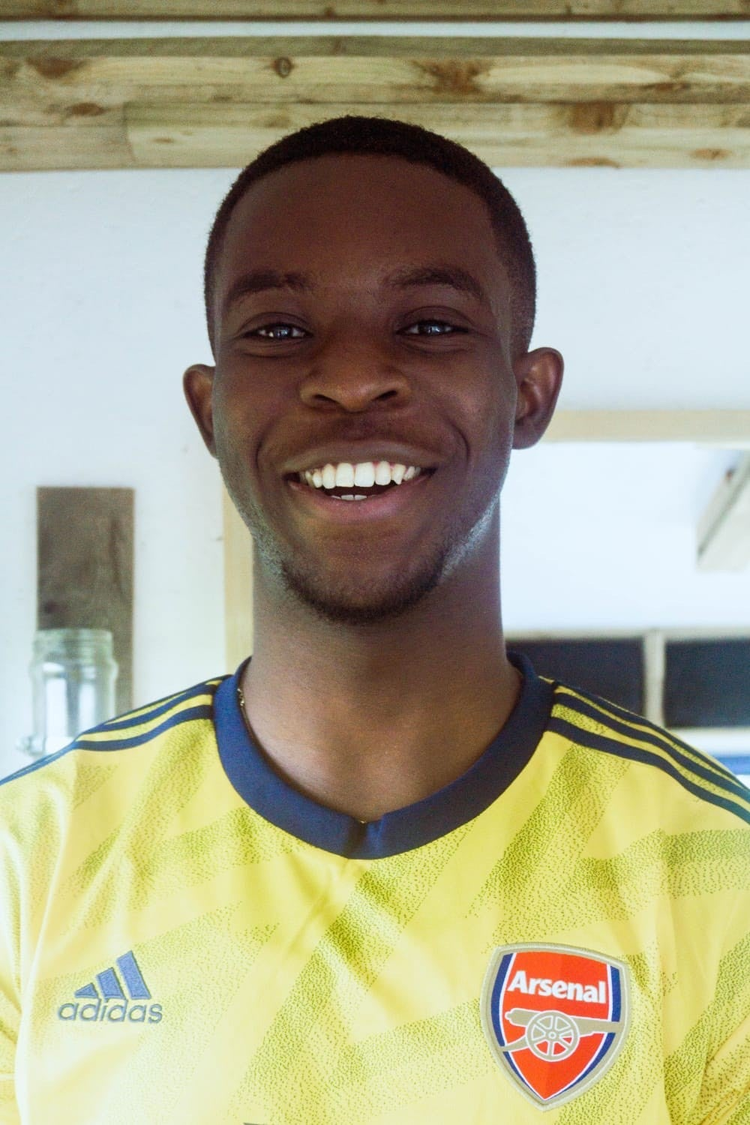Tyrone Magnusen explains how diversity in the creative industries can break down barriers

Tyrone Magnusen
Spend even a short amount of time with Tyrone Magnusen, and you get the impression of an inquisitive mind, constantly questioning. “I have a curiosity about how things are made, why they have a particular form or shape? Over time that naturally led me to being creative, to explore different ways of making things, and what effect that has on people.”
Growing up in London, he seems to have always been clear that the questioning had an ultimate goal “When I was young, I thought: ‘I want to be thought-provoking.’” It was a way of growing personally, but also to challenge closed minds; “If you can provoke them to thought, you can relate to them.”
“If you can provoke someone to thought, you can relate to them.”
Tyrone Magnusen, Motion Designer
Building a foundation
His early enthusiasm for films such as Tron and The Matrix hinted at a fundamental appreciation for technology. With creative siblings, and a father who worked with computers, for Magnusen, “tech and creativity have always gone hand in hand.” Experimenting with photography and video, posting on YouTube and Vimeo led onto exploring graphics at an early age. With an unconditional offer to study film at university his path seemed set, but Magnusen felt something wasn’t quite fitting. “I love film, but I also grew up playing with graphics on Photoshop.” Figuring there must be something that combined the two, he eventually found a Creative Technology degree, which has allowed him to explore a career he had no idea existed.
Seeing her son finishing university with a good degree, but no job waiting, Magnusen’s mother gave him a well-placed nudge, telling him, “You have until September to find a role, or you have to get a job.” As Magnusen explains “it was pressure, but good pressure, because it made me go out every day to try to find something.” This application led to the discovery of the HeadStart programme, to which he is still palpably grateful. It was there that a mock interview with the then managing director of creative agency Territory Studio went so well he ended up securing a six-month internship with the production house. For Magnusen, “that internship programme opened my eyes” and having a mentor in the industry helped him see that there was a real career there that he could work towards. “It gave me my chance” he states, matter-of-fact.
Taking advantage of opportunity
It would be fair to say that Magnusen has seized that chance, working on a range of projects from branding to films. The visual effects heavy film, Shanghai Fortress, was particular early highlight; “That was the first project where I had people relying on me. That was my breakthrough into the industry.” Then there was the time spent on one of the UK’s most enduring series: “Working on the latest Bond film… that blew my mind.” Indeed, it is impressive how much Magnusen has fit into his first few years in the industry.

Tyrone Magnusen
Overcoming challenges
However, breaking into this career has not been without its challenges. “Everyone was really nice, but I personally found it tough because I felt like my background was so different.” Magnusen explains that, while wanting to fit in is universal, for some that seems more straight forward. “It’s stereotypical to say, but the creative industries are middle-aged, white, straight and male dominated.” It was his passion for the job that helped Magnusen push himself beyond his comfort zone; “If you love what you do, you’re always going to connect with people round you. If you all love what you’re doing, there’s always a commonality.”
“If you can provoke someone to thought, you can relate to them.”
Tyrone Magnusen, Motion Designer
Magnusen’s own competence and confidence have grown, to the point where he describes creating animations in After Effects as his “comfort zone”, and he says that even in his time at Territory he has seen things changing for the better, with more diversity evident. However, he explains: “People from diverse backgrounds make up such a small percentage of the industry. When we speak, everyone echoes almost the same thing; the sense of loneliness, not having many people that we can relate to on that different level.”
Magnusen is at pains to point out that there are many within the industry with the right intentions, but admits finding solutions is more complex. “It takes a big conscious effort to look at unconscious bias. People tend to hire people that they get along with naturally and relate to. So it’s about being aware of your actions; are you hiring someone based on skill, or on how well you get along with them? That’s the difference between good intentions and being accountable.”
Reaching out to students, both at universities and earlier at school, is certainly helpful in establishing that a career in the creative industries is even an option. However, Magnusen feels it will take more diversity in senior roles to really change the picture. “It means a lot seeing someone of a similar background, or sexuality, or disability in a senior role. It makes you feel like it’s possible.”
“Seeing someone of a similar background, or sexuality, or disability in a senior role… makes you feel like it’s possible.”
Tyrone Magnusen, Motion Designer
Being part of that change is a motivating factor for Magnusen, including participating in this interview; “I wanted to show people from diverse backgrounds that it’s possible to do this as a career. If you love what you do, and put your passion into it, you can progress.” As he says, that diversity is crucial for industry itself: “When you champion diversity, it exposes new ideas, new creative avenues to explore.” And in a world searching for authentic moments, understanding your audience has ever been more important. “The world is super-diverse. If you’re making content for an audience which includes different backgrounds, cultures, sexualities, and abilities, but no one from those realities is involved, then it can come across as superficial rather than authentic.” Modern, sophisticated audiences understand when they are shown something that doesn’t ring true: “It’s the same thing with VFX; you can build a whole city in 3D, but if something’s off, the eye will catch it.”
Again, it comes back to Magnusen’s desire to provoke thought, and to connect; “It’s about being open to understanding another person’s experiences. That’s what film can do: it can let you see a different reality. You can learn and change your perceptions.”
What’s next
Still only 24, Magnusen plans to spend the rest of his twenties working on as many projects a possible, to be “a sponge,” constantly learning and grateful for the opportunity. Perhaps in his 30’s he’ll want to specialise more, he says, but doesn’t want to “get caught up in titles or anything that’s egocentric, because that actually harms creativity.” He’ll just be happy continuing to dive into future tech, he laughs.
In the meantime, does he have any advice for anyone considering a creative career? “Let your curiosity guide you. Be open, be curious, follow your intuition. If you want to try something, don’t be afraid to try it. If you have a question, don’t be afraid to ask it.” It’s easy to see how Magnusen’s infectious energy, his thirst for knowledge, would make him an asset for any team, let alone the creative and technical skills he evidently brings to the party. If you’re looking for motivation on your own journey you could do worse than following his example and advice; “if you have an idea, if you have something that you’re passionate about, just go for it.”
“Let your curiosity guide you”
Tyrone Magnusen, Motion Designer
Hear more from diverse creators at Adobe Diverse Voices and check out Adobe Premiere Pro to you bring your stories to life.